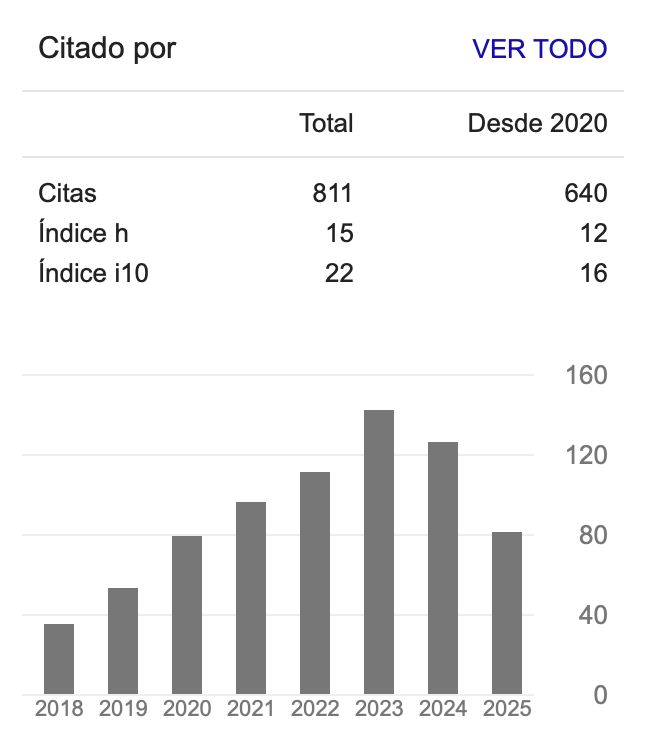The Use of Educational Videos to Improve Student Motivation in the Physical Education Classroom
El uso de videos educativos para la mejora de la motivación del alumnado en el aula de educación física
DOI:
https://doi.org/10.54104/papeles.v15n29.1458Keywords:
Situated learning, physical education, motivation, learning outcomes, relationship, information and communication technologies (ICT)Abstract
Introduction: One of the main problems faced in Physical Education classes is the low motivation of students to perform the exercises indicated by the teacher. The objective of the article is to present the process that was developed and later to present the implementation of a set of educational videos to accompany the Physical Education courses in a public institution located in a municipality in the northeast of Colombia. On the other hand, the implementation of pedagogical methodologies mediated by information and communication technologies has shown positive results to improve student motivation in various areas of knowledge. Methodology: Thus, this work presents the results of an experimental design, where a series of educational videos were used to improve motivation in the Physical Education class. Thirty-one students between the ages of 16 and 18 (M = 16,48, SD = 0.67) participated in the study; 16 students (7 men and 19 women) participated in the control group and 15 students (9 men and 19 women) participated in the experimental group. 6 women). Results and discussion: The results indicate that using the videos significantly improved the motivation of the students with whom they performed the respective exercises. Conclusions: These results are promising and represent an incentive to continue replicating this type of activities that enrich Physical Education classes.
Downloads
References
Ateş, H. & Garzón, J. (2022). Drivers of teachers’ intentions to use mobile applications to teach science. Education and Information Technologies, 27(2), 2521-2542. https://doi.org/10.1007/s10639-021-10671-4
Castro, S., Guzmán, B. y Casado, D. (2007). Las TIC en los procesos de enseñanza y aprendizaje. Revista de Educación, 13(23), 213-234. https://doi.org/10.33262/cienciadigital.v3i2.6.575
Cera Castillo, E., Almagro, B., Conde García, C. y Sáenz-López Buñuel, P. (2015). Inteligencia emocional y motivación en educación física en secundaria. Retos: Nuevas Tendencias en Educación Física, Deporte y Recreación, 27, 8-13. https://doi.org/10.47197/retos.v0i27.34336
Cohen, J. (1992). Quantitative methods in psychology. Psychological Bulletin, 112(1), 155-159. https://doi.org/10.1037/0033-2909.112.1.155
Deci, E. L. & Ryan, R. M. (1985). Intrinsic motivation and self-determination in human behavior. Springer Science & Business Media.
Deci, E. L. & Ryan, R. M. (2000). The “what” and “why” of goal pursuits: Human needs and the self-determination of behavior. Psychological Inquiry, 11(4), 227-268. https://doi.org/10.1207/S15327965PLI1104_01
Durán Vinagre, M. Á., Leador Albano, V. M., Sánchez Herrera, S. y Feu Molina, S. (2021). Motivación y TIC como reguladores de la actividad física en adolescentes: Una revisión sistemática. Retos: Nuevas Tendencias en Educación Física, Deporte y Recreación, 42, 785-797. https://doi.org/10.47197/RETOS.V42I0.88120
Goldie, J. G. S. (2016). Connectivism: A knowledge learning theory for the digital age? Medical Teacher, 38(10), 1064-1069. https://doi.org/10.3109/0142159X.2016.1173661
Hutmacher, D., Eckelt, M., Bund, A. & Steffgen, G. (2020). Does motivation in physical education have an impact on out-of-school physical activity over time? A longitudinal approach. International Journal of Environmental Research and Public Health, 17(19), 7258. https://doi.org/10.3390/ijerph17197258
Keller, J. M. (2010). Motivational design for learning and performance: The ARCS model approach. Springer.
Kirk, D. & Macdonald, D. (1998). Situated learning in physical education. Journal of Teaching in Physical Education, 17(3), 376-387. https://doi.org/10.1123/jtpe.17.3.376
Lave, J. & Wenger, E. (1991). Situated learning: Legitimate peripheral participation. Cambridge University Press.
Monguillot, M., González, C. y Montse, G. (2017). La colaboración virtual docente para diseñar situaciones de aprendizaje mediadas por TIC en educación física. Didacticae: Revista de Investigación en Didácticas Específicas, 2, 6-23. https://doi.org/10.1344/did.2017.2.6-23
Mujica Johnson, F. N. (2019). El dualismo cuerpo y alma en la educación física: Análisis de las ideas de José María Cagigal. Revista Digital de la Educación Física, 10(60), 116-126. https://emasf.webcindario.com/El_dualismo_cuerpo_y_alma_en_Educaci%C3%B3n_Fisica.pdf
Nowels, R. G. & Hewit, J. K. (2018). Improved learning in physical education through immediate video feedback. Strategies, 31(6), 5-9. https://doi.org/10.1080/08924562.2018.1515677
Olivera Beltrán, J. (2006). The contribution of José María Cagical to the sport humanism. Revista Internacional de Sociología (RIS), 64(44), 207-235. https://doi.org/10.3989/ris.2006.i44.34
Østerlie, O. & Mehus, I. (2020). The impact of flipped learning on cognitive knowledge learning and intrinsic motivation in norwegian secondary physical education. Education Sciences, 10(4), 110. https://doi.org/10.3390/educsci10040110
Potdevin, F., Vors, O., Huchez, A., Lamour, M., Davids, K. & Schnitzler, C. (2018). How can video feedback be used in physical education to support novice learning in gymnastics? Effects on motor learning, self-assessment and motivation. Physical Education and Sport Pedagogy, 23(6), 559-574. https://doi.org/10.1080/17408989.2018.1485138
Romdhane, M. & Khacharem, A. (2021). Controlling the display of videos in a physical education context: Effects on learning outcomes and situational interest. Physical Education & Sport Pedagogy, 1-13. https://doi.org/10.1080/17408989.2021.2005013
Rosenkranz, R. R., Ridley, K., Guagliano, J. M. & Rosenkranz, S. K. (2021). Physical activity capability, opportunity, motivation and behavior in youth settings: Theoretical framework to guide physical activity leader interventions. International Review of Sport and Exercise Psychology, 1-25. https://doi.org/10.1080/1750984X.2021.1904434
Simonton, K. L. & Garn, A. (2019). Exploring achievement emotions in physical education: The potential for the control-value theory of achievement emotions. Quest, 71(4), 434-446. https://doi.org/10.1080/00336297.2018.1542321
Downloads
Published
-
Abstract645
-
PDF (Español)654
How to Cite
Issue
Section
Categories
License
Copyright (c) 2022 John Esteban Ospina Valencia

This work is licensed under a Creative Commons Attribution-NoDerivatives 4.0 International License.






